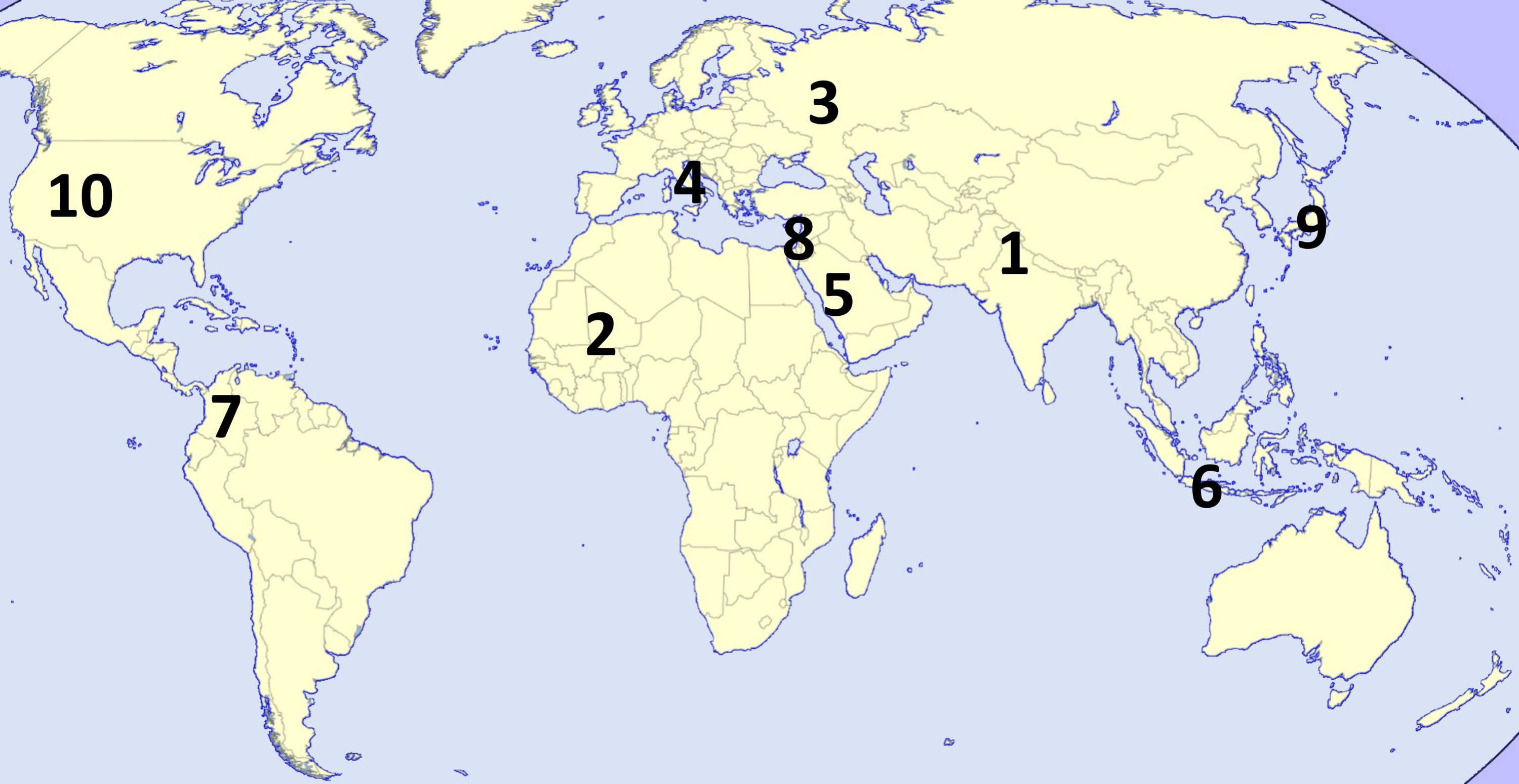
Worship Round the World Trivia Quiz
There are many holy sites located around the world. In this quiz you have to match 10 sites from a variety of religions to their locations on the map.
A label quiz
by Stoaty.
Estimated time: 3 mins.


| 1. |
| 2. |
| 3. |
| 4. |
| 5. |
| 6. |
| 7. |
| 8. |
| 9. |
| 10. |